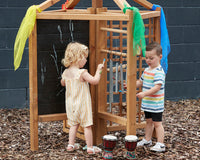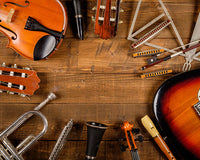Brass instrument mouthpieces are probably the most discussed (argued!) topic amongst brass players. The variations in sizes/brands available is considerable and some people spend their entire playing life searching for that 'perfect' one.
The reality is that we are all different and what size suits one isn't necessarily right for another. The ability level and physical size of the player along with the style of music played all have a bearing when choosing a suitable mouthpiece.
The Anatomy of a Brass Mouthpiece
Before we can begin to choose a mouthpiece, it is important to understand how they are constructed. Whilst ultimately the way it plays will be the deciding factor, without a basic understanding of how they are designed it is almost impossible to narrow down the field. I will briefly discuss each component of the mouthpiece here but have purposely avoided giving advice or recommendations on suitability.

Rim
The rim of the mouthpiece is obviously the part that touches the lips and therefore impacts greatly on the comfort whilst playing. A wider rim will help when playing for longer periods of time but a narrower one offers better flexibility and ultimately range. A more rounded rim helps with the comfort but one with a sharper edge does help a player to attack the note with more precision.
Cup
There are two aspects to the cup, the diameter and the depth. The larger the diameter the louder the sound that can be produced as more air can be pushed into the instrument, it also makes controlling the sound a bit easier.
However, a smaller diameter requires less effort to play meaning the players lips/embouchure will not tire as easily. The deeper the cup the fuller the tone that can be produced and the easier it is to play in the lower register. A shallow cup generally gives a brighter tone and is easier to play in the higher register but there can be a compromise on the quality of tone produced.
Throat
A large throat will produce a bigger tone and be freer blowing but can make playing softly more difficult. It is also more tiring to use a mouthpiece with a large throat. A smaller throat does restrict the air flow and can have the effect of flattening the higher register and sharpening the lower. Due to the smaller aperture the sound is usually brighter. However, contrary to popular belief it does not make it easier to play high notes.
Backbore
Unlike the other components, the backbore is not generally measured in specific sizes as they do vary in terms of shape and taper. Manufacturers design a backbore that works best with whatever combination of rim, cup and throat are present on the mouthpiece in question. As with the other parts though it can have a significant effect on the tone, pitch and volume of the instrument.
Shank
The size of the shank ensures that the mouthpiece fits comfortably into the receiver/leadpipe of the instrument. They are a standard size for trumpets, cornets and horns but for trombones and lower brass there are Small and Large Shank options. Generally, student and small bore instruments use the small and professional and larger bore instruments use the large. There used to be a medium sized found on older Boosey & Hawkes instruments (pre 1974) such as the imperial euphonium and it is still possible to purchase a mouthpiece with this shank if required.
Mouthpiece Manufacturers
There are many companies out there producing mouthpieces today we recommend Montreux, Vincent Bach and Denis Wick. The majority of other manufacturers base their mouthpieces on the original Vincent Bach designs.
Summary
I hope this has given you a better insight into how mouthpieces are designed and help you when deciding which one is best for you. As I said at the beginning, there are no 'one size fits all' solutions and I usually recommend you get some advice from a teacher before parting with your money.




















